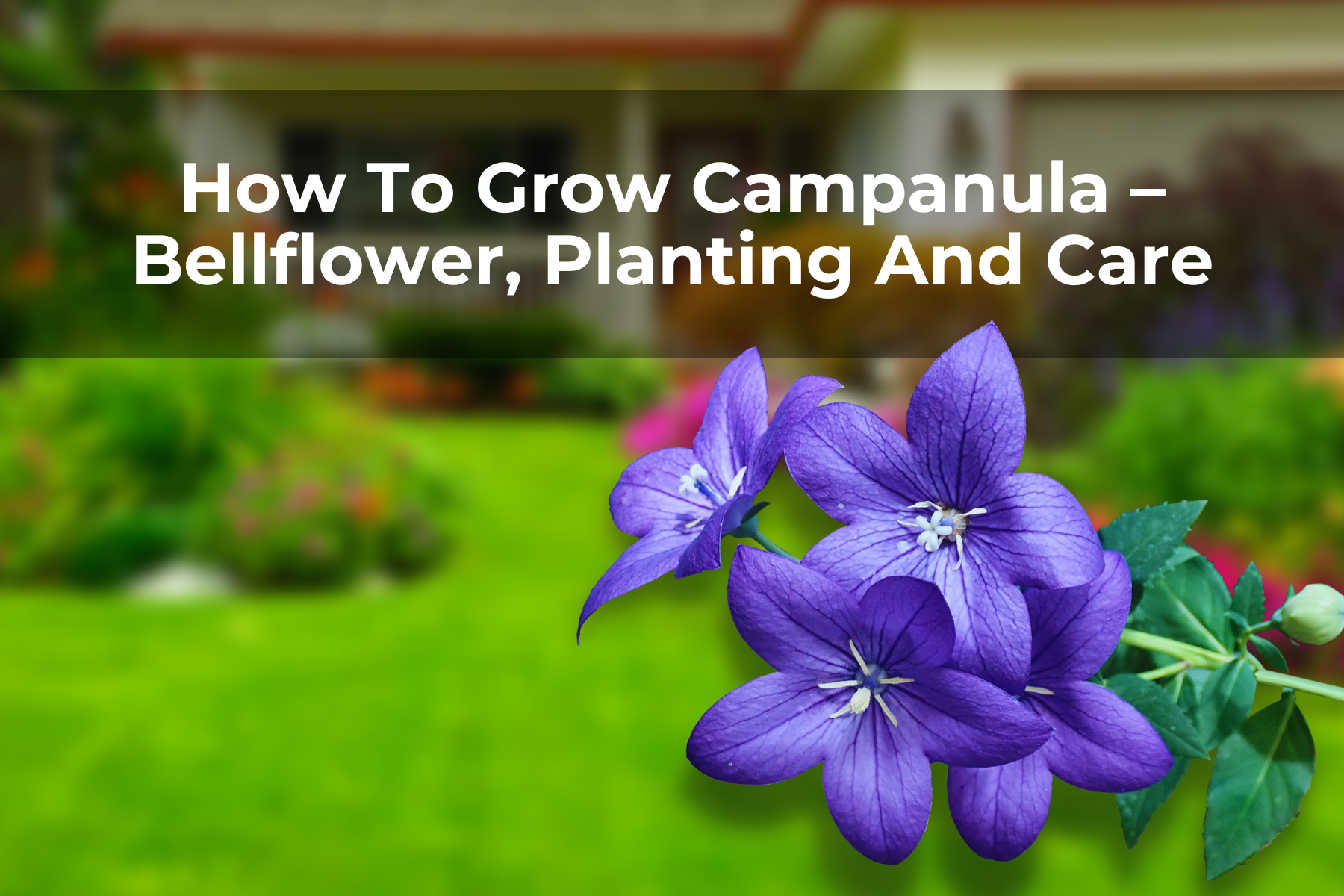Last Updated on October 8, 2022 by Real Men Sow
The Campanula or Bellflower is an easy-to-grow, ground-covering, winter-hardy plant. It comes in a variety of colours, including blue, purple, and pink. Because of their distinctive bell-shaped, upturned flowers, Campanulas have been called Bellflowers.
These alpine natives, which are low-maintenance and easy to grow, are great for beginners as well as more experienced gardeners. They make an excellent addition to any garden. They can withstand extreme weather and are great for hanging containers, rock gardens, and borders.
How to Grow Campanula or Bellflower
It is important to learn everything you can about growing and caring for Campanula flowers if you are ready to plant them in your yard.
Soil and Mulch
Plant in well-drained soil that can withstand partial to full sunlight. Campanula will produce more flowers the more sunlight it receives.
After planting your Campanula, add 2-3 inches of organic mulch to the area. Please avoid mulching directly against the plant as this can cause possible rot. The mulch will retain moisture and prevent weeds from growing in your garden. It can also fertilize your gardens as it breaks down.
Spacing
Space the plants 15-18 inches apart for planting. These flowers can be very sprawling so it is best to divide them in spring and fall. You can either cut down your Campanula once winter arrives or leave it as overwintering habitat for birds.
Its Blooms
Campanulas bloom for a long time, and their best colours are seen from late spring through early fall. These flowers require very little maintenance. You can water them during dry spells and fertilize them once a year with an all-purpose garden food (5-10-10 or 10-10).
To encourage more blooms, trim dead heads and extend the flowering period. To prevent damage to your flower stems, always use small scissors or gardening tools when trimming Campanula.
Companion Plants for Campanula or Bellflower
These flowers make great companion plants for Campanula or Bellflower: Columbine, Roses, Lady’s Mantle, Lamb’s Ear.
Campanula or Bellflower Care Guide
Campanula or Bellflower care does not require extensive knowledge. They are like most perennials and can withstand extreme weather conditions.
To promote more flowers and a long-lasting display, deadheading is an important part of bellflower care. To rejuvenate the plant, you can also trim it to the ground in the winter and early spring. Some bellflower varieties are invasive and should be removed before they spread.
Watering Campanula or Bellflower
Your Campanulas will be unhappy if you don’t water them properly, so make sure to not underwater your plants. Bellflowers can withstand short periods of drought once they are established. The ideal soil conditions for Bellflowers are average to medium-humidity soil. If your plants have drooping leaves, it could indicate that they are underwatered.
Overwatering also affects the plant and can lead to root rot. This can be fatal and can even lead to the death of your Bellflower plants. It is better to submerge your plant than to overwater. You can soak and dry your Bellflowers if you aren’t sure how often to water them. Allow your plants to dry between waterings.
Propagation of Campanula or Bellflower
You can grow more Campanula or Bellflower plants outdoors if you wish. You can propagate Campanula or Bellflower by seed, basal cuttings and division.
Basal Cuttings Method
You can use any soft-wooded parts of the Campanula or Bellflower that have not flowered. You should cut basal cuttings approximately 4 inches (10 cm) in length. Make sure you remove the lower leaves before planting. Dip the cuttings in the rooting hormone. Finally, you should plant the cuttings into well-draining soil. Basal cuttings can also be used to propagate Chrysanthemums and Heleniums as well as Dahlias, Asters, Delphiniums, and Dahlias.
Division Method
Split the root ball in spring into multiple sections to propagate by division. For a better chance of propagation, ensure that the sections are at least 2 inches (5cm) in diameter. The next step is to place the sections into the soil and water them frequently. It is important to avoid prolonged sunlight exposure and persistent droughts when planting Campanulas.
Seeds Method
You can propagate Campanula or Bellflower with the use of deeds by planting the Campanula seedlings in spring once you are certain that there is no risk of frost. To keep the seedlings moist, water them regularly.
Pests and Diseases of Campanula or Bellflower
Campanula or Bellflower can be very sensitive plants. There are many problems that can threaten them. Bellflowers can be affected by a variety of diseases and pests, including root rot, leaf spot disease, Botrytis and powdery mildew.
Your Bellflower plants’ health can be endangered by snails and slugs. Slugs and snails can cause serious damage to ornamental plants and gardeners don’t like them. They can also eat whole seedlings. You can stop the slugs and snails from eating your Campanulas.
These problems can be identified by yellow central leaves, brown and soft leaves or curled edges, lack of flowers, sudden loss of older blooms, brown and soft leaves, brown leaves, yellow central leaves, brown leaves, dry brown edges, or lack thereof. You should immediately take note of any unusual behaviour in your Bellflowers and get treatment.


